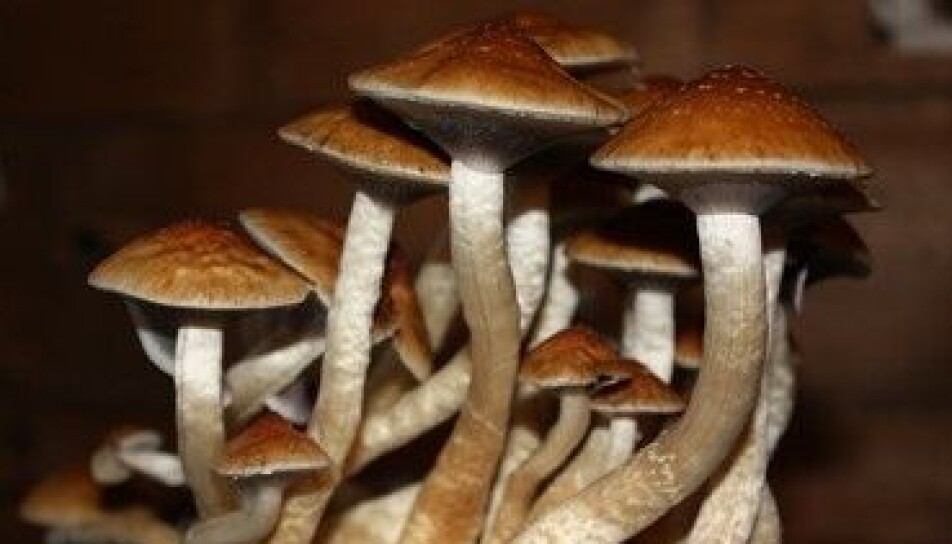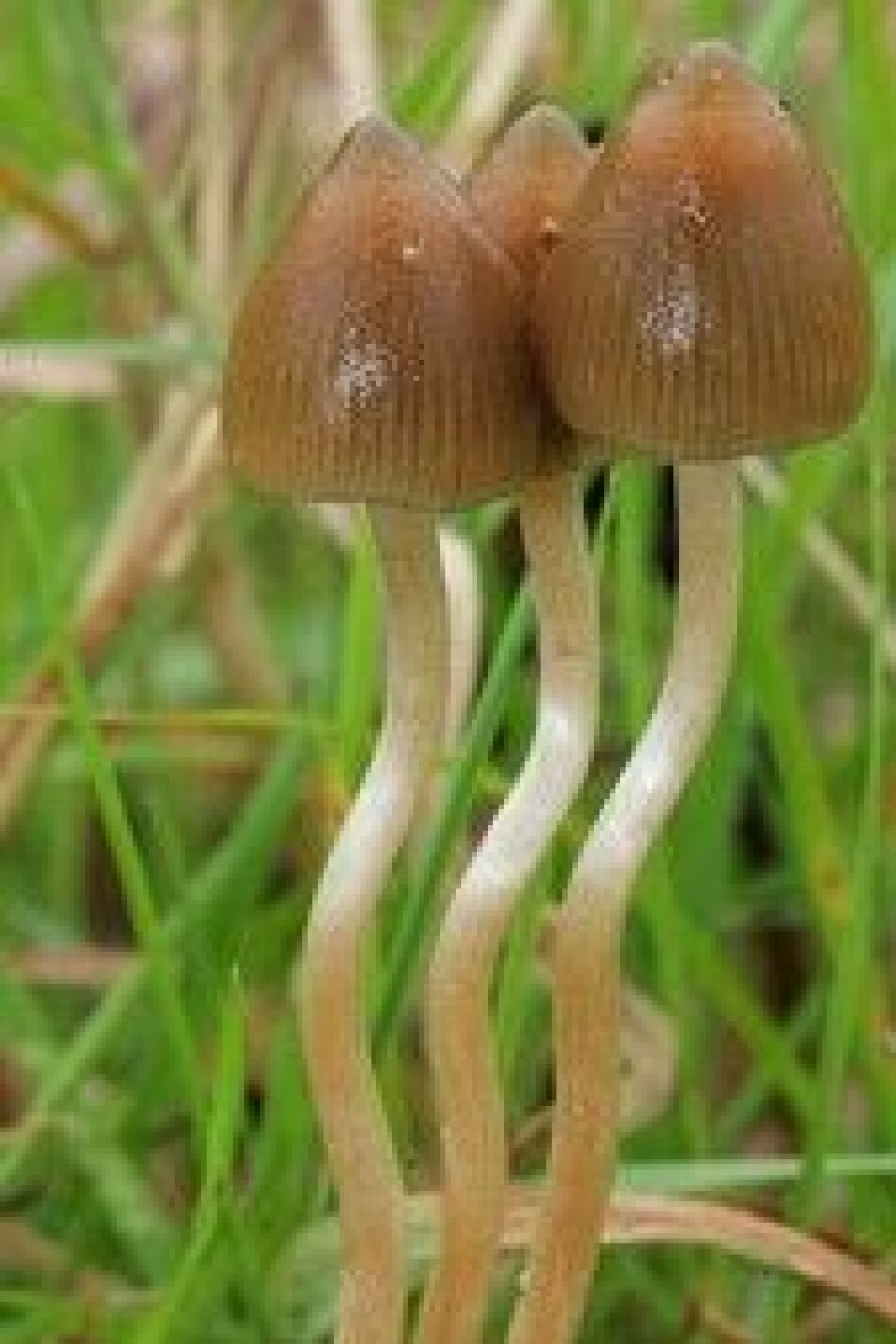Researchers' Zone:

Heading towards mushroom wonderland
The cultural role of psychedelic mushrooms and how they affect the body.
The story of little Alice falling down a rabbit hole and finding herself catapulted into a world where nothing appears to make sense is as famous as can be.
Who could forget, for example, the mushroom that could make whoever tasted it either grow taller than a building or shrink to near invisibility? As outlandish as this may sound, perhaps the most incredible aspect of it is that there is some truth to this scenario.
Indeed, some mushrooms have the power to alter our vision of the world around us and even our perception of our own size.
As a direct follow-up to our previous article “The deadly toxins of mushrooms“, here we will dive into the colourful world of some of the most famous mushrooms with psychedelic effects and elaborate how they affect the human body.
The fly agaric’s wild card
One mushroom that can affect our perception of size is the world-famous fly agaric: although rarely lethal, this mushroom is undoubtedly poisonous, with its main toxic agents being two molecules known as muscimol and ibotenic acid.
Both are small-sized toxins that act directly on the central nervous system, inducing excitation of neurons to the point of unabashed euphoria- in other words, psychedelic effects.
Intriguingly, it did not take long for humanity to discover the mind-altering properties of the fly agaric and its close relative, the panther cap (Amanita pantherina). In fact, consumption of these mushrooms for mind-altering purposes dates back to the dawn of civilization.
A mushroom stairway to the supernatural realm
The iconic red/orange cap with scattered white dots that makes the fly agaric unmistakable featured prominently in artworks and ritual ceremonies from Southern Asia through Egypt all the way to Northern Europe.
Across these regions, priests and shamans relied on it to escape the constrains of the material world and attain a closer connection to the supernatural realm.
Such practices live on to this day among certain communities in Eastern Europe and Siberia, helped by the great adaptability of the fly agaric that allows it to thrive across the globe.
That being said, the mind-altering properties of this iconic mushroom pale in comparison to those of other species- as people in the Americas knew all too well even centuries ago.
New World, ancient rituals: Hallucinogenic mushrooms in Mexico
Psychoactive mushrooms were objects of worship in their own right, with statuettes and reliefs displaying them as attributes of certain local deities.
Even centuries later, when Spanish colonization had nearly eradicated local religious beliefs, ritual consumption of psychoactive mushrooms persisted among Indigenous communities.
Among the numerous local species capable of altering brain functioning, the most frequently consumed belong to the Psilocybe genus (a group of closely related species).
A genus of hallucination
Psilocybe is not only a common genus in Mexico. In fact, it is widespread across the globe and many of its members are well known for its remarkably potent psychedelic toxin, psilocybin.
Upon entering the intestine, this molecule is converted into its active form psilocin, which acts similarly to serotonin and dopamine in the brain- causing excitation and feelings of happiness.
However, that is not all: psilocin takes things to the next level, inducing ‘symptoms’ ranging from physical hallucinations to altered perception of time and space.
The Danish way
While the rising popularity of Psilocybe species in recent decades was sparked by New World species (that is, only found in the Americas), Danes never needed to cross the Atlantic to try out other mushroom species containing psilocin.

In fact, Psilocybe representatives are found throughout the world, including Nordic countries- where their unique psychedelic properties did not go unnoticed.
In Denmark, the common and highly hallucinogenic liberty cap (Psilocybe semilanceata) even inspired one of the most famous psychedelic rock bands in the country, who decided to adopt the Danish common name of this mushroom (‘Spids nøgenhat’) as their own label.
From a scientific point of view, the Danish company Lophora recently made headlines for repurposing psilocybin as an antidepressant drug, with human clinical trials already in progress.
The doctor’s struggle to silence a castle
Despite its historically widespread consumption in Latin America, psilocybin only started attracting significant attention from researchers in the early 20th century, following detailed (and often disputed) accounts of its intriguing mind-altering effects.
Among the first scientists to set their minds on hallucinogenic mushrooms was Dr. Gastón Guzmán, who was initially sceptic on the allegedly marvellous psychoactive properties of Psilocybe species.
Nonetheless, while on an expedition in the remote Mexican village of Huautla de Jiménez in 1958, he gladly accepted the offer of such mushrooms from the local Mazatec tribe.
Around two hours later, he was – in his own words - struggling to silence the giant, sentient castle whispering in his ear so that he could instead concentrate on watching the dance performed by two equally enormous black men on the other side of his bed.

Why are mushrooms psychedelic?
With this story in mind, one can’t help but wonder why a mushroom would evolve psychedelic toxins in the first place, especially considering that these organisms had existed for millions of years already when humans first appeared on Earth.
However, conclusive evidence in support of either hypothesis is lacking, and the function of psilocybin in the wild remains largely unknown to this day.
From Palate to Mind
The enigmatic ecological role of psilocybin and other psychedelic toxins is only one of many fascinating aspects of mushroom biology that we still know very little about.
Besides, toxins like psilocybin, although well capable of causing serious medical consequences, continue to be an invaluable resource to study some of the intricacies of our brain and explore new therapeutic venues for neural disorders.
Mouth-watering delicacies, deadly poisons, and even gateways to otherwise unimaginable mental states.
The humble mushroom certainly stores plenty of secrets, enough that a two-part article is required to cover even just a select few of them. Be it for food or for science, a deeply rooted appreciation for mushrooms remains a distinctive trait of humankind.




